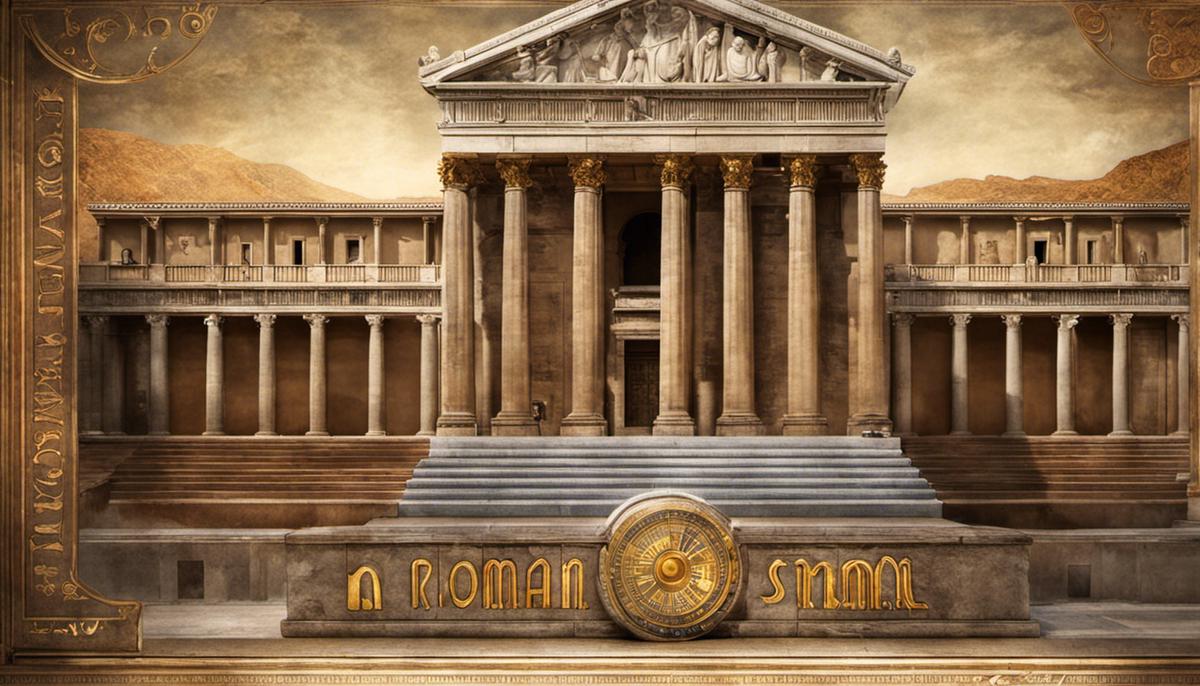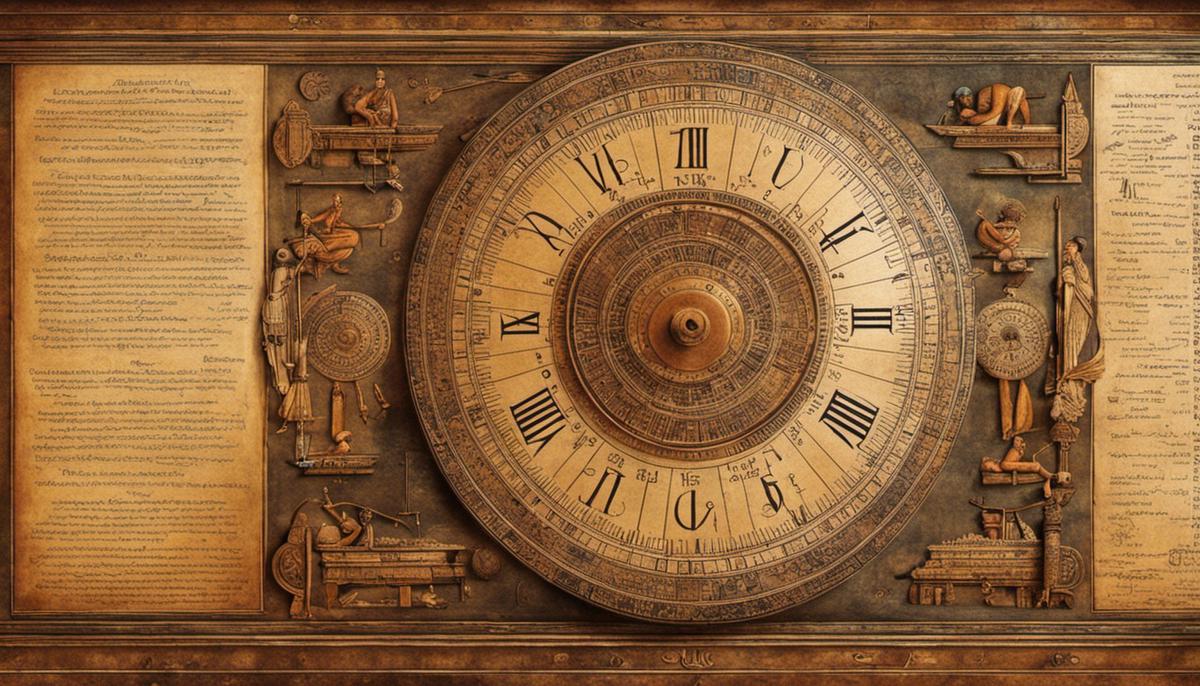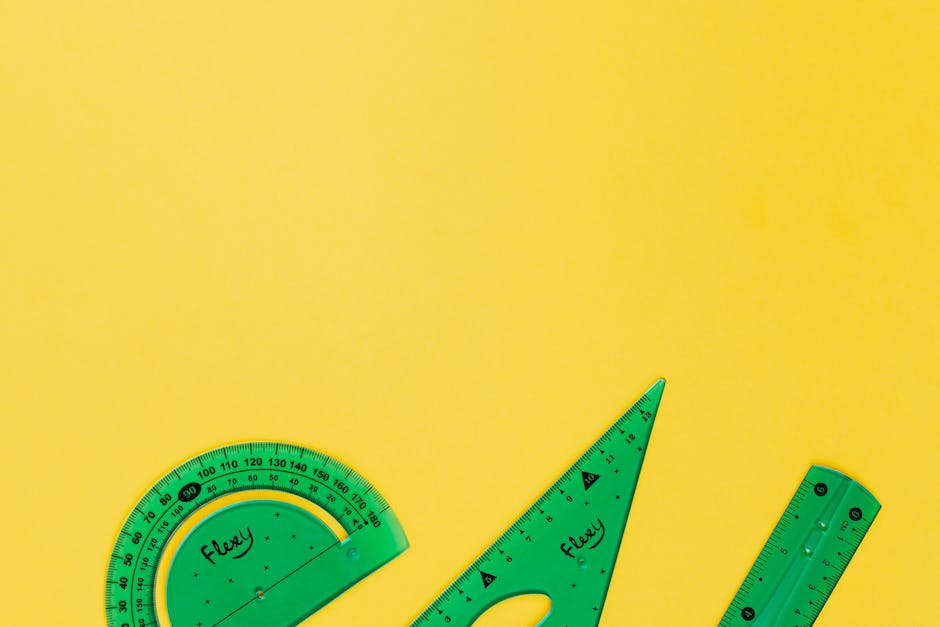Delving into the world of ancient civilizations brings one face-to-face with ingenuity and knowledge that far exceeds what may initially be anticipated. Just as their architectural prowess and understanding of natural phenomena command respect, so does their intricate comprehension of measurements. This splendid tapestry of knowledge spans across different civilizations such as Ancient Egypt, Rome, Ancient India, and Ancient China. Each of these societies developed unique, sophisticated units of measurement that revolutionized standardization and impacted various aspects of life, ranging from architecture and trade to agriculture and science.
Measurement Systems in Ancient Egypt
Standardization of Measurements in Ancient Egypt: Methods and Significance
In the spatiotemporal framework of ancient civilizations, the meticulous mathematical and scientific methods seen in ancient Egypt stand out as a testament to human ingenuity. Delving into the labyrinthine sphere of standardized measurements in this civilization brings to the forefront the advanced nature of their societal structure that is a cornerstone of modern metrology. This primer elucidates the nuances of measurement standardization in ancient Egypt and examines its far-reaching significance.
The standardization of measurements in ancient Egypt predominantly encompassed dimensions of length, volume, and weight. The primary unit of length, referred to as the ‘royal cubit’, was subdivided into seven ‘palms’ and each palm into four ‘digits’. Every component was meticulously defined, and, interestingly, variations in measurement standards generated for different purposes were negligible.
To ensure effectual enforcement of this standard across the country, ‘cubit rods’ – precise copies of the royal cubit – were disseminated among architects and surveyors. This replica-based method contributed to uniformity in construction and planning, from granaries to grand pyramids.
Volume measurements primarily catered to trade and taxation systems. The most commonly used unit was the ‘hin’, equivalent to approximately 0.47 liters. It was subdivided into fractions indicating the Egyptians’ advanced mathematical capabilities. Batches of ceramic vessels called ‘beer jars’ standardized volume commercially and domestically, reinforcing economic uniformity.
Weight standards were founded on ‘deben’, with one deben equaling about 91 grams. This unit, more often applied to commodities like metal and gemstones, acted as a benchmark in ancient Egyptian commerce. The uniformity in weight standards streamlined trade, sparing the civilization from predatory pricing and trade imbalances.
It is crucial not to underestimate the wide-reaching societal implications of these measurement standards. The standardization brought profound regularity in many areas of life – portraying not only architectural feats of grandeur but also facilitating efficient taxation, trade, and resource distribution.
A standardized measurement system served as a binding fabric, lending order and coherence to a civilization spread across the Nile’s vast expanses. Furthermore, the application of such a comprehensive, standardized system of measures palpably speaks volumes about the level of administrative organization and the regulatory prowess of the Egyptian Pharaohs.
Beyond its functional role, the standardization process mirrored the deeply ingrained ideology of Ma’at, or cosmic order, in the ancient Egyptian worldview. The consistent application of mathematical and geometrical principles in all sectors of society resonated with their central beliefs in harmony, balance, and order.
In conclusion, the precision and consistency of standardized measurements embodied the grandeur of ancient Egypt – bridging the mundane world of everyday transactions with cosmic harmony, making Egypt a confluence of an advanced civilization and profound philosophy. This intriguing interplay of mathematical prowess, pragmatic governance, and philosophical underpinnings continues to captivate researchers and enthusiasts alike, providing fertile food for thought on the interconnectedness of knowledge, culture, and social organization.

Roman System of Measurement
The Romans, in their assertive pursuit of administrative order and systematic governance, deviated from the traditional methodologies exercised by Ancient Egyptians, notably inaugurating their own unique system of measures.
One of the hallmarks of the Roman system was its utilization of dual categories of measurements: Major and Minor. The Roman Foot (Pes) – a unit operating in all three dimensions of size – length, volume, and weight, was divided into twelve unciae. However, unlike the subdivided royal cubit of the Egyptians, the unciae of the Roman Foot allowed for measures of exceptionally smaller units, thereby providing Romans with the capability to perform more precise calculations.
There was a stratification within Roman weight measures too, with the system based on an as, originally a pound, which was then divided into twelve unciae. Catering to the rigid requirements of taxation, trade, and military engineering, this nuanced procedure serviced the spectrum of administrative and scientific demands.
Expanding beyond these terrestrial measures, the Roman intellect delved into astronomical dimensions, implementing time measures rivaled only by the Egyptians. They divided daytime and nighttime into 12 hours each: a practice still observed in contemporary society.
Yet, despite similar adherence to duodecimal (Base-12) numbers and societal needs, the Romans and Egyptians differed substantially in how they implanted these systems within societal parameters. Unlike the Egyptians, whose standardization efforts were entwined with religious and cosmological views, the Romans bound their measures to an institutional framework, reflecting their pragmatic view of the state and human endeavor rather than a cosmic one. Indications of this pragmatic perspective emerge in the peculiar Roman deadlines, a concept unheard of in the ancient world, demonstrating their keen attention to time management.
Romans’ sense of order and coherence extended into molding imperial control; such meticulous standardization across the vast empire presented a tangible emblem of Roman power. Unlike the Egyptian Pharaohs who utilized measurements to enforce regulatory control, Romans exemplified their dominance through their ability to direct and harmonize regulatory functions an empire-wide scale.
Roman laws also dictated the maintenance and verification of measurement standards. Just as the Egyptian cubit rod embodied the accuracy of calculations, Roman Libripens (balance-holders) were entrusted with the state’s official weights, their duty being to ensure fair trade practices. Thus, while Romans mirrored Egyptian practices in encouraging equity, they departed from the religious exteriors of the Egyptian’s system towards a pragmatically-oriented practice.
Illustrating the dexterity of Roman thought, their scientific aptitude in mathematics intertwined with their political acumen to forge a particularly Roman system of measurement. While this system seemingly mirrors that of the ancient Egyptians, the spirit that breathed life into it was distinctly Roman, bearing the indelible stamp of their practicality, sense of order, and aspirations for empire-wide consistency and control.

Measurement Units in Ancient India
Shifting our gaze from Egypt and Rome, we focus our scholarly lens onto the Indian subcontinent, whose ancient civilizations demonstrate an equally sophisticated approach to quantifying measurements. In depth, we explore how these ancient measurement systems, aside from playing pivotal roles in construction, trade, and taxation, had profound impacts on the progress and development of Indian civilization.
Firstly, in the realm of length, ancient Indians used a scale largely anthropomorphic in nature, with ‘Angulas’ or finger-widths and ‘Hasta’ or cubits forming the fundamental units. The roots of quantification presented themselves in the most humanistic form, portraying the adoption of an intuitive and readily accessible standard. Intriguingly, the underlying philosophy reflects essential Indian spiritual principles, grounding the notion of measurements in the human body, thus sweeping beyond pure pragmatism to touch upon the metaphysical.
Continuing to weight measures, ancient Indian standards splendidly exhibited a uniform system underlined by multiples of ten, introducing a decimal scheme centuries ahead of its widespread adoption. In this framework, the barley corn ‘Yava’, akin to the granule of millet in ancient Egypt, became the core unit. Yet, most striking is the calibration and precision that were hallmarks of their weight measures, as illustrated by excavated sites. This sort of precision signaled sophistication in trade and commerce, often overlooked when considering ancient civilizations.
Ancient Indian units of time, fascinatingly, broke away from the duodecimal norm seen in Babylon and Rome, instead embracing a sexagesimal system. This intriguing divergence underlines the autonomy and individuality of the Indian empirical systems, throwing ample light on their scientific prowess independent of influence.
However, beyond their tangible implications in trade, taxation, and construction, these measurement systems played an even more profound role. They helped forge the very fabric of the society, mirroring its hierarchical structure. More significantly, they mirrored the inherent belief system of ‘Dharma’, the cosmic law of order, akin to Egyptian Ma’at, binding empirical systems with deeper philosophical principles.
The impact of these scientific measurements on the progress of Indian civilization cannot be overstated. This system, innovative and precise, became a bedrock of their administrative and economic mechanisms. Furthermore, these intrinsic principles of order, calibration, and precision bled into the realms of architecture, mathematics, and astronomy, with notable instances like the construction of Harappan cities and development of the ‘Shulba Sutras’, offering astonishing testament to their infrastructural and intellectual prowess.
True, the words of Pliny the Elder echo that ‘India is the sink of the world’s gold’, yet, it is indispensable to comprehend that it was also a crucible of scientific thought and innovation, greatly accentuated by their system of measurements. Hence, the Indian system of lengths, weights, and time not only endorsed their flourishing trade and craft but also provided an invaluable framework fostering culture, administration, and intellectual accomplishments.

Ancient Chinese System of Measurements
In shifting our historical discourse from the civilizations of Egypt, Rome, and India, the profundity of ancient Chinese measurement methods must not remain obscured. Ancient China employed unique methodologies that formed an integral part of their socio-economic fabric and was also influential in their inestimable technological advancements.
A virtually inescapable element of ancient Chinese life, measurement indeed influenced the development of the civilization, aiding its growth from a diverse medley of Neolithic tribes into a harmonized entity. With the measurements for length, volume, and weight forming the bedrock of a highly operational and codified system, it was this systemization that undoubtedly precipitated the sophistication of ancient China.
Historically, ancient China utilized the ‘chi’ as its primary unit of length measurement. Intriguingly, much akin to their contemporaries in the ancient world, ‘chi’ had anthropomorphic underpinnings. Originating as the width of a human thumb, it later evolved into a larger unit, identic to the breadth of five grains of millet laid end to end.
Volume measures, on the other hand, revolved around the ‘sheng’, a vessel representing the normative volume unit. Gradations of ‘sheng’ enabled scores of measurements for diverse purposes such as agriculture, cooking, or in transactions, demonstrating flexibility within uniformity.
The intricacies of Chinese weight measures were denoted by ‘jin’ and ‘liang’. As a binary system established during the Qin dynasty to form a uniform standard, these units permitted complex calculations and transactions, a testament to the sophistication of Chinese intellectual culture.
Such a well-crafted system for measurement bore implications far beyond mere size or weight determination—it facilitated trade, rendered taxation efficient, underpinned construction undertakings, and introduced a degree of order and predictability into Chinese society. Highly integral to economic activities, the uniformity of measurement eliminated ambiguity, thereby driving fairness in trade encounters and ensuring seamless inter-regional exchanges.
Notably, the Chinese measurement units bore an enduring synergy with decimal and sexagesimal systems—profoundly impacting the development of Chinese mathematics and astronomy. This scientifically-charged interface thus emboldened the innate precision of measurement systems, indicating ancient China’s substantial contribution to global scientific legacy.
Reflective of societal values while simultaneously shaping them, Chinese measurement systems mirrored a society of order, precision, and standardization—a reflection of their inherent Confucian ethos of hierarchies and order. The magnitude of these foundations can be deciphered from the fact that they echo in the ‘si’ and ‘li’ we encounter in modern China, bridging the chasm between antiquity and the present day.
Just as Egyptian cubits and Ma’at, Roman feet and imperial control, and Indian units and their spiritual underpinnings reveal a symbiotic relationship, ancient Chinese analogies resound with echoes of harmony, uniformity, and precision. As fundamental structures for operation in a society-they embody an interplay, a dance between tangible measurements, and intangible ideologies.
In conclusion, the unique ways in which ancient Chinese civilization approached measurement, represented perhaps less ostentatiously but no less significantly, demonstrate the interconnectivities that form a civilization. These physical systems and their metaphysical significances intertwined intricately, echoing Chinese philosophy’s pursuit of harmony, informing not just their social fabric but also the intricate tapestry of global cultural, scientific, and intellectual history.

The systems of measurement developed by ancient civilizations like Egypt, Rome, India, and China provide a testament to human ingenuity and the seeds of modern scientific advancements. These were not arbitrary calculations, but well-thought-out measurement units intricately interwoven into the societal fabric, assisting in the creation of architectural wonders, facilitating trade, guiding agricultural practices, and contributing significantly to the progress of the respective civilizations. As we look back and appreciate these conceptual milestones, we cannot help but marvel at the collective determination of our ancestors to understand the world around them. Their immense contribution, spanning across different geographies and cultures, illuminates humanity’s timeless quest for knowledge and progress.
